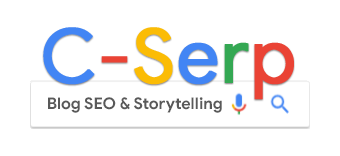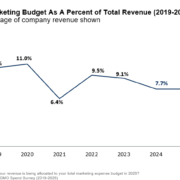How to justify your SEO budget in 2025

Up to 59% of CMOs report having insufficient budget to execute their strategy in 2025, according to Gartner.

As uncertainty persists due to tariffs, inflation, agency cuts, and other factors, marketing and business leaders must make tough decisions about what to trim.
One of those decisions is whether they should continue to prioritize SEO.
But the question is: Does cutting SEO actually save money, or cost more in the long run?
Why SEO can feel ‘optional’
SEO often gets cut because it’s slower to show impact and harder to tie directly to pipeline.
Unlike media buys, there’s no cut-and-dry invoice that shows “here’s what you got.”
But short-term cuts can have a long-term impact. When you pause SEO:
- Your top content can lose ground to competitors.
- New pages go unoptimized and unnoticed.
- Technical issues accumulate, reducing crawlability and site performance.
That means when you are ready to ramp back up, you’re not picking up where you left off. Instead, you’re digging out of a hole while others have been steadily climbing.
This doesn’t mean SEO is untouchable, but it should be evaluated through a long-term lens.
Instead of cutting it entirely, the smarter play is to focus on optimizing for opportunity and value, which I’ll cover in a bit.
Dig deeper: 8 strategic steps for setting and overseeing your SEO budget
The case against SEO cuts, backed by data
We all know that search engine results are shifting due to Google’s AI initiatives and increased zero-click behavior.
The new reality is that organic listings are being pushed farther down.
Some sectors are impacted more than others.
While some report clicks are up, others report a decline.
Despite this, the organic channel remains a top driver for traffic, with 26% of total traffic from organic search versus about 23% of paid traffic, according to a 2025 report by Content Square.

More importantly, SEO consistently drives better results over time.
SEO delivered nearly five times more return on ad spend at a fraction of the cost, per a 2025 study by CI Web Group.

Yet brands continue to prioritize paid media.
Paid media is dominating marketing spend, with about 31% of the budget going towards it (2.4% of company revenue), according to Gartner (linked earlier).
However, Gartner also notes that, with media price inflation, “CMOs are getting less for every dollar spent.”
Paid media certainly has its place (and it may be one strategy in a zero-click world), but we must remember that SEO can:
- Lower customer acquisition cost over time.
- Provide sustained organic visibility when competitors are vying to outrank you.
- Build brand authority in key search moments, ensuring you show up.
Dig deeper: AI search is booming, but SEO is still not dead
Traffic is still there, just in different places
If your organic traffic is down, it’s tempting to assume SEO is no longer working.
But that misses the bigger picture: Users aren’t searching less, they’re interacting with search results differently.
Between AI Overviews, People Also Ask panels, Map Packs, shopping carousels, video results, and more, the SERP is a full-blown information hub.
As Google continues to refine AI Overviews and other SERP features, visibility isn’t disappearing; it’s just being redistributed.
The search results are a layered experience. People scroll, explore, compare, and return to the results before taking action.
When your brand appears in multiple places across the SERP, it increases the chance of a click and builds credibility and trust. We call this “SERP Visibility.”
If you shift your SEO strategy from thinking “blue links” to dominating the search results, you reclaim and diversify traffic.
Bottom line: Modern SEO is about traffic and influence.
Let’s say a potential buyer searches for “best B2B CRM software.” That one search could combine any of these features in the search results:
- A featured AI Overview summarizing top options, with your product cited.
- A PPC ad with a compelling offer and sitelinks.
- A People Also Ask panel with a question your blog post answers.
- A trusted review site listing you in the top three.
- A YouTube video carousel featuring your product demo.
- Your website in the organic results with a comparison guide.
If your brand is present in even two or three of those features, you’ve created a surround-sound experience. Essentially, you’ve made it easier for the buyer to choose you.
This is what it means to own the decision moment.
Dig deeper: The 5 new realities of search: Rethinking content strategy for 2026 and beyond
Proving long-term value
Do you have an audience that uses a search engine (or a genAI chatbot) to find answers, products or services? Then you should prioritize SEO.
SEO is the baseline strategy for becoming visible across the SERPs. And no, it’s not going away.
The more you invest in SEO, the more visibility, trust, and traffic you earn, without necessarily increasing spend. This compounding effect is what makes SEO such a powerful strategy.
To prove this, forecasting is an invaluable tool. SEO forecasting is about predicting future SEO performance based on historical data, trends, or market conditions.
There are many ways to do this, including using SEO forecasting templates and tools like Google Analytics and Google Search Console. Semrush and Ahrefs also offer tools and tips for this task.
You can run “what if” scenarios, like “If we paused X, then traffic may drop by Y” – and tie that to potential revenue loss.
You could also explore what happens if you do nothing by showing which pages are at most risk and where competitors may outrank you.
Armed with the right insights, you can begin to paint a picture of SEO’s worth. And you can show why cutting SEO will cause your competition to pull ahead.
The reality is that organic traffic can keep flowing if you approach it the right way. It helps:
- Fill gaps.
- Sustain brand visibility.
- Drive cost-effective conversions even in times of uncertainty.
Dig deeper: Don’t kill your SEO budget, shift it
How to make the most of your SEO investment
Cutting SEO budgets might save money in the short term, but it often creates bigger gaps in the long term.
A smarter approach is to optimize your investment. Focus on the initiatives that deliver the most value and align with business goals.
Here’s how to make SEO work harder, even on a leaner budget:
Focus on high-impact activities
Prioritize technical cleanups and SERP visibility for your keywords.
For example, we’re currently building in-house software that shows which SERP features are served for any given keyword so we can help our clients win those opportunities.
These tactics can deliver measurable gains in the shortest time.
Dig deeper: SEO prioritization: How to focus on what moves the needle
Align with revenue-driving priorities
It’s important to understand why budgets are getting cut, so you can realign SEO to business goals. You want to show how SEO can capture market share.
On that same note, connecting SEO efforts to company goals can help break down the walls between business silos (which can lead to more progress and better SEO outcomes).
Uplevel reporting
Create executive-friendly dashboards that link SEO performance to business KPIs like CAC and share of voice, not only traffic or rankings. This helps prove SEO’s worth.
Think SEO efficiency
SEO is an investment with compounding returns. When you focus on being more efficient in your SEO strategy, you can ensure every dollar spent moves the business forward faster.
A fork in the road
We’re at a crossroads. Those who think SEO is dead will de-prioritize SEO. Those who see the opportunity in the search engine results will get ahead.
Considering all of the ways to be found on a search results page, you realize that there are more opportunities than just the blue links.
SERP visibility is a traffic-first approach to SEO.
When you optimize across SERP features, you increase your visibility, diversify your traffic sources, and reduce dependency on any single channel.
You also create brand authority and resilience, positioning your company to own the decision moment, no matter how the SERP evolves.


